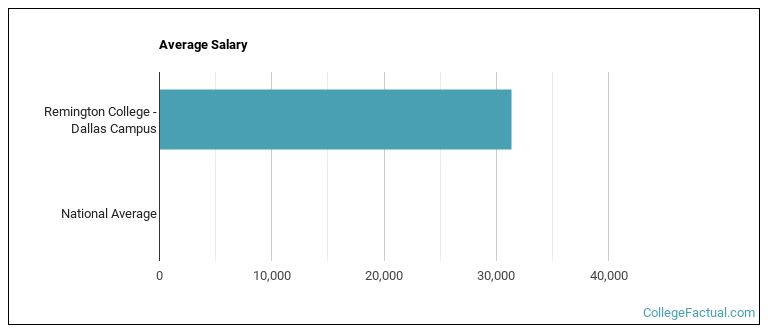 by our College Data Analytics Team
by our College Data Analytics TeamExplore the best ranked schools for the programs you are most interested in.
Remington College - Dallas Campus was not ranked in College Factual's 2025 Best Overall Colleges report. This could be for a number of reasons, including lack of data.
See all of the rankings for Remington College - Dallas Campus.
As long as you meet basic requirements, you should not have any trouble getting into Remington College - Dallas Campus since the school has an open admissions policy. Still, be sure to submit any requested materials and that your application is completed in full.
The student to faculty ratio is often used as a measure to gauge how much access students will have to their professors - the lower the number, the better. At Remington College - Dallas Campus, this rate is 26 to 1, which is high when compared to the national average of 15 to 1.
The freshmen retention rate of 100% tells us that most first-year, full-time students like Remington College - Dallas Campus enough to come back for another year. This is a fair bit higher than the national average of 68%. That's certainly something to check off in the good column about the school.
The on-time graduation rate for someone pursuing a bachelor's degree is typically four years. This rate at Remington College - Dallas Campus for first-time, full-time students is 67%, which is better than the national average of 33.3%.
Find out more about the retention and graduation rates at Remington College - Dallas Campus.
During the 2017-2018 academic year, there were 628 full-time undergraduates at Remington College - Dallas Campus.
| $0-30 K | $30K-48K | $48-75 | $75-110K | $110K + |
|---|---|---|---|---|
| $24,494 | $25,595 | $26,231 | $26,775 | $26,995 |
The net price is calculated by adding tuition, room, board and other costs and subtracting financial aid.Note that the net price is typically less than the published for a school. For more information on the sticker price of Remington College - Dallas Campus, see our tuition and fees and room and board pages.
While almost two-thirds of students nationwide take out loans to pay for college, the percentage may be quite different for the school you plan on attending. At Remington College - Dallas Campus, approximately 75% of students took out student loans averaging $8,624 a year. That adds up to $34,496 over four years for those students.
Get more details about paying for Remington College - Dallas Campus.

See which majors at Remington College - Dallas Campus make the most money.
Get more details about the location of Remington College - Dallas Campus.

Contact details for Remington College - Dallas Campus are given below.
| Contact Details | |
|---|---|
| Address: | 9451 Lyndon B Johnson Fwy, Dallas, TX 75243 |
| Phone: | 972-686-7878 |
| Website: | https://www.remingtoncollege.edu/locations/dallas/ |
| Most Popular Majors | Bachelor’s Degrees | Average Salary of Graduates |
|---|---|---|
| Allied Health & Medical Assisting Services | 144 | NA |
| Heating, Air Conditioning, Ventilation & Refrigeration | 42 | NA |
| Health & Medical Administrative Services | 34 | NA |
| Business Administration & Management | 10 | $40,806 |
| Criminal Justice & Corrections | 8 | $31,793 |
| Building Management & Inspection | 6 | NA |
| Legal Support Services | 6 | NA |
Online courses area a great option for busy, working students as well as for those who have scheduling conflicts and want to study on their own time. As time goes by, expect to see more and more online learning options become available.
In 2022-2023, 302 students took at least one online class at Remington College - Dallas Campus. This is a decrease from the 427 students who took online classes the previous year.
| Year | Took at Least One Online Class | Took All Classes Online |
|---|---|---|
| 2022-2023 | 302 | 0 |
| 2021-2022 | 427 | 0 |
| 2020-2021 | 628 | 0 |
| 2018-2019 | 779 | 0 |
Learn more about online learning at Remington College - Dallas Campus.
Footnotes
*The racial-ethnic minorities count is calculated by taking the total number of students and subtracting white students, international students, and students whose race/ethnicity was unknown. This number is then divided by the total number of students at the school to obtain the racial-ethnic minorities percentage.
References
More about our data sources and methodologies.